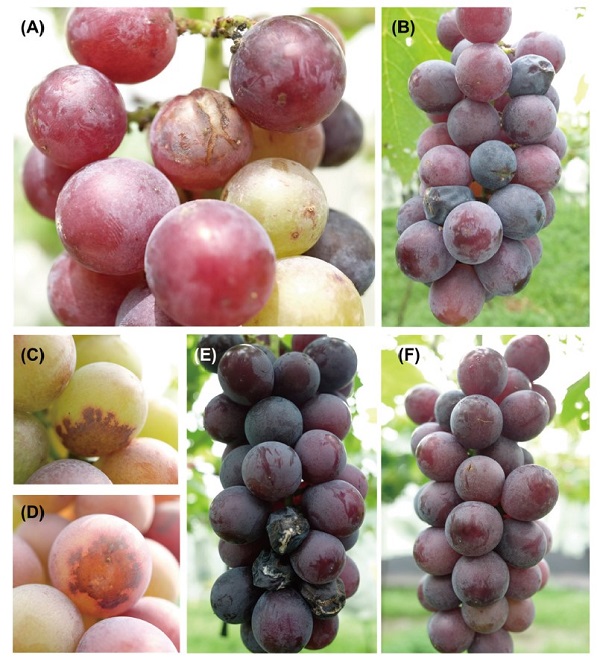All issues

Author:Chu-Ping Lin*, Jyh-Nong Tsai , Pao-Jan Ann , and Ming-Te Lu
Abstract:
Virulence of Colletotrichum viniferum, Colletotrichum fructicola, and Colletotrichum tropicale from different isolation sources were compared on grapes (Vitis vinifera). In vivo pathogenicity test on the detached grape berries showed that C. viniferum was the strongest virulent species, which could cause significant and larger spots of ripe rot on grape berries with or without wounds. Moreover, the virulence of fruit isolates seems to be stronger than that of the leaf isolates; C. fructicola was ranked second in virulence. Interestingly, the virulence of the C. fructicola isolate from goose weed (Eleusine indica) was stronger than other isolates from grape fruits and leaves; C. tropicale was the lowest virulent species, and all the isolates in this study required wounds to infect berries. In addition, in planta pathogenicity tests of C. fructicola and C. tropicale were performed. In young grapes inoculation test, only berries inoculated with isolates of C. fructicola could develop the typical ripe rot disease symptoms after veraison. The disease rate and symptoms were higher and severer with C. fructicola isolated from goose weed than those from grape isolates, while no obvious symptoms with C. tropicale isolates. As for whole potted plants inoculation test, no obvious disease symptoms appeared on leaves or other parts of plants inoculated with any of the selected isolates of C. fructicola and C. tropicale. To our knowledge, this study is also the first report of goose weed leaf anthracnose caused by C. fructicola, which showed water-soaked and browning symptoms on leaf. These data suggest that, in the field, goose weeds could be an alternative host of C. fructicola. C. fructicola might live in a saprophytic life on grape leaves, waiting for chances to infect grape berries.
Key words:Grape ripe rot, Colletotrichum viniferum, Colletotrichum fructicola, Colletotrichum tropicale, Virulence test.
Download:![]() PDF Links
PDF Links
- 1. Using Digital Soil Mapping to Predict Soil Organic Carbon Stocks in Zhuoshui River Basin
- 2. Development of a Technique for Forecasting (or Pre-Detection) Anthracnose Disease Incidences of Green Mature Bagging Mango Fruits
- 3. Taxonomic Review of the Genus Asiophrida Medvedev, 1999 in Taiwan (Insecta: Coleoptera: Chrysomelidae: Galerucinae: Alticini), with Notes on Biology
 Submit your manuscript
Submit your manuscript
 Guide for authors
Guide for authors